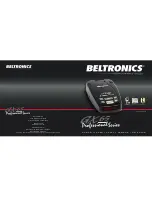
24
25
Speed Cameras
SWS Text Messages
Highway Construction or Maintenance
1
Work Zone Ahead
2
Road Closed Ahead/Follow Detour
3
Bridge Closed Ahead/Follow Detour
4
Highway Work Crews Ahead
5
Utility Work Crews Ahead
6
All Traffic Follow Detour Ahead
7
All Trucks Follow Detour Ahead
8
All Traffic Exit Ahead
9
Right Lane Closed Ahead
10
Center Lane Closed Ahead
11
Left Lane Closed Ahead
12
For future use
Highway Hazard Zone Advisory
13
Stationary Police Vehicle Ahead
14
Train Approaching/At Crossing
15
Low Overpass Ahead
16
Drawbridge Up
17
Observe Drawbridge Weight Limit
18
Rock Slide Area Ahead
19
School Zone Ahead
20
Road Narrows Ahead
21
Sharp Curve Ahead
22
Pedestrian Crossing Ahead
23
Deer/Moose Crossing
24
Blind/Deaf Child Area
25
Steep Grade Ahead/Truck Use Low Gear
26
Accident Ahead
27
Poor Road Surface Ahead
28
School Bus Loading/Unloading
29
No Passing Zone
30
Dangerous Intersection Ahead
31
Stationary Emergency Vehicle Ahead
32
For future use
Weather Related Hazards
33
High Wind Ahead
34
Severe Weather Ahead
35
Heavy Fog Ahead
36
High Water/Flooding Ahead
37
Ice On Bridge Ahead
38
Ice On Road Ahead
39
Blowing Dust Ahead
40
Blowing Sand Ahead
41
Blinding Snow Whiteout Ahead
42
For future use
Travel Information/Convenience
43
Rest Area Ahead
44
Rest Area With Service Ahead
45
24 Hour Fuel Service Ahead
46
Inspection Station Open
47
Inspection Station Closed
48
Reduced Speed Area Ahead
49
Speed Limit Enforced
50
Hazardous Materials Exit Ahead
51
Congestion Ahead/Expect Delay
52
Expect 10 Minute Delay
53
Expect 20 Minute Delay
54
Expect 30 Minute Delay
55
Expect 1 Hour Delay
56
Traffic Alert/Tune AM Radio
57
Pay Toll Ahead
58
Trucks Exit Right
59
Trucks Exit Left
60
For future use
Fast/Slow Moving Vehicles
61
Emergency Vehicle In Transit
62
Police In Pursuit
63
Oversize Vehicle In Transit
64
Slow Moving Vehicle
SWS
How SWS Works
Safety Warning System, or SWS, uses a
modified K-band radar signal. The SWS
safety radar system has 64 possible
messages (60 currently allocated). The
SWS messages your GX65 can display are
listed on the facing page.
From the factory, your GX65 is
programmed with SWS decoding OFF. If
you wish to detect this system, use the
Programming feature to turn the GX65’s
SWS decoding ON. If SWS is used in your
area, your GX65 will display the safety
messages associated with the signal.
NOTE: Some of the safety
messages have been condensed, so
that each message can be displayed
on one or two screens on the GX65’s
eight-character display.
Since Safety radar technology is
relatively new, and the number of
transmitters in operation is not yet
widespread, you will not receive Safety
signals on a daily basis. Do not be
surprised if you encounter emergency
vehicles, road hazards and railroad
crossings that are unequipped with these
transmitters. As Safety transmitters
become more prevalent (the number of
operating transmitters is growing every
day), these Safety radar signals will
become more common.
How Speed Cameras Work
There are several types of fixed position
speed cameras used, including radar, laser,
induction loop and photo-based.
Radar and laser based cameras are
typically mounted near the road and
transmit a short range signal across the
lanes monitored. Since this signal is
transmitted across the road instead of
down the road like many handheld
systems, detecting them in time is critical.
Another technology used is an
inductive loop system. This type of system
utilizes wire buried just beneath the
surface of the road to trigger a computer
which calculates speed between the two
points.
Photo-based systems take two sets of
pictures of all passing vehicles between
two separate fixed locations. Both sets of
photographs are date and time stamped,
which enables the system to calculate
average speed between the two locations.
Fixed speed cameras can also be set
up to monitor one to four lanes of traffic in
the same direction. To achieve this, a
sensor is installed in each lane and a wide
angle camera lens is used to photograph
the vehicle which is speeding.




































